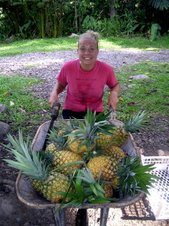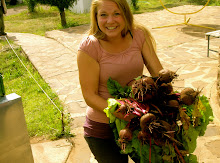Happy New Year! I like even numbers better than odd by some unexplainable prejudice, so that is one more reason (apart from adventure and challenge) that I am looking forward to 2008.
I have just returned from the embrace of my briny beloved. Over Christmas I was able to visit the coast with a number of other volunteers. There was no surf to be had, but getting to the ocean and feeling at home was reward enough for six months of very intense land-lockedness.
I was reading my dear friend Betsie’s blog (who is a Peace Corps Volunteer in Benin) and chuckling as I read her account of voyaging home. I thought I would do a similar travel account just to give you all some minor appreciation for what it takes to leave Lesotho and get to the coast.
To make the trip in two days I must get all my ducks in a row so that every leg of the journey is timed correctly. Poor timing can result in waiting in a long line to cross the river, or a four hour taxi ride standing up sandwiched between 300 lb African women who insist that I am too fat to fit in the taxi. My pilgrimage begins with a 30 minute hike down to the Senqu river (you must click when you see a “q” in Sesotho). This hike takes me through red clay fields struggling to grow green corn, and past herd boys clad in blankets who escort donkeys, sheep, and goats down the same dirt path I travel. There is the occasional traffic jam in which I get shuffled into the brush and donkeys kick and bray as they trot past. As I descend to the wide snaking river, I must scan the curving water for the boat-crossing and pick my path carefully so I can intercept the tin skiff at the right landing. This special, delinquent boat crossing is typically the most exciting part of the journey. The boat crew is a group of teenage boys with glazed eyes from the local “dagga” and the load is usually twice the capacity of the boat. The boat capacity is twelve, I have ridden across with twenty-five, and prayed the entire time. The river is swollen this time of year so it is about 30 yards wide with a significant current which moves the boat rapidly downstream as the operator strains on his oars. (The oars are actually more like large sticks with a small indentation denoting the “paddle” portion.) Every time the crossing is made the boat must be hauled via rope up the stream to compensate for the drift, this makes each crossing tedious so they load as many people as possible in the boat. All the passengers are terrified of water, because very few people can swim. This means when the little white girl (who is rumored to float) climbs in the boat people cling to her like a buoy. Once the boat is loaded way past capacity and a little tushy or plastic sack is placed over the leak in the bow, we shove off across the river. I hold my breath until we bump (or ram) the opposite shore. Even here the fun does not end because people are antsy to deboard so they pile out the side leaving those is the boat scrambling to keep it from tipping, I usually throw my weight around to steady the silver steed fearing the eminent flip. Once back, kissing the other shore, I have another hour hike up a steep canyon to the closest town where I can catch a taxi. After being wedged into a dilapidated van-taxi (lovingly called a kombi) I ride the four bumpy hours to the capital. Kombi’s play special music, typically an ear bleeding variety with accordions, screaming lyricists, and babies crying, an exceptional mix for a tight ride with your head in someone else’s armpit. Upon arriving in the capital, Maseru, you pull hat over your eyes and book it through the taxi rank. The rank includes vendors screaming marriage proposals, honking, mud, frying sausages, and smells that are akin to sweat and grease. Once safely navigating the taxi rank an overnight stay in Maseru is required, this includes a few more taxi rides and honking before an AM departure to the border. Once at the border the customs agents look suspiciously at the American and turn your passport all four ways before allowing you to walk the hundred yard bridge over no-man’s land to South Africa. Once across the border, there is another two hour kombi, a thirty minute walk, a rental car, a day of driving, then finally, beach and bliss. I forgot the partridge in a pear tree. For those of you still with me I apologize but I felt it necessary to guilt all of you into enjoying your 10 step walk to your car with a cup of coffee. Which is better? Hard to say whether adventure wins over comfort, I suppose it depends on the day.
Thursday, January 3, 2008
Subscribe to:
Posts (Atom)

